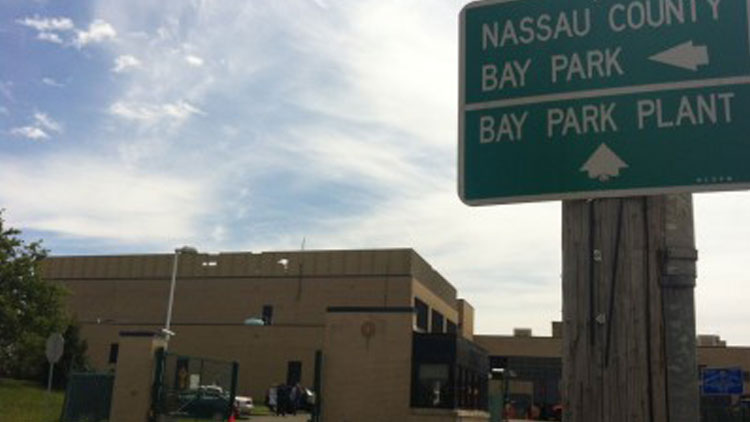Sen. Chuck Schumer has just come up with another way to fund the badly needed ocean outfall pipe at Nassau County’s Bay Park Sewage Treatment Plant in East Rockaway but it’s still at least a quarter of a billion dollars short.
New York’s senior Democratic senator proposed that $210 million come from the Hazard Mitigation Grant Program award, which was approved for New York State by the Federal Emergency Management Agency last month. But the entire project is estimated to cost more than $550 million.
“The Bay Park Outfall Pipe is the last piece of the puzzle when it comes to rebuilding the Bay Park Sewage Treatment Plant from Sandy and making it more resilient against future storms,” Schumer said in a press release Monday. “It is sorely needed to help prevent another environmental disaster from happening in Nassau County.”
The pipe would be an addition to the sewage treatment plant that is already being rebuilt after being flooded by 9 feet of water during Superstorm Sandy in 2012. The outfall pipe, which would redirect treated waste many miles into the Atlantic Ocean instead of being dumped in the vulnerable Western Bays, is needed in order for the new plant to meet the Environmental Protection Agency’s Clean Water regulatory standards. According to the governor’s office, the Bay Park plant currently treats about 50 million gallons of sewage a day, discharging the treated water into the back bay north of Long Beach.
Scientists have said that nitrogen from the effluent discharged into the bay is harmful to marshland that protect the shorelines from erosion.
While Schumer’s proposal has drawn support from both Nassau County Executive Ed Mangano and local environmental groups, the final decision about where this grant money will go lies in the hands of Gov. Andrew Cuomo’s Office of Storm Recovery.
“We have not been formally notified of this additional formula-based funding,” said Barbara Brancaccio, a spokeswoman for the storm recovery office. “If New York is to receive additional FEMA money, we will discuss all potential uses of the funding, including for the outfall pipe.”
Last year the governor announced that the state had secured an agreement from the federal government to provide $810 million to repair and upgrade the plant, which serves a half-million county residents, as well as ensure that the new facility could “withstand a 500-year storm event.” But since no FEMA money was given to constructing a new outfall pipe, the governor said they’d be “requesting additional funding for this important project.”
Schumer has proposed that the state tap into FEMA’s Hazard Mitigation Grant Program because New York has some discretion over how it is allocated.
“The state decides what projects they want to fund with that,” said FEMA representative Ray Perez to the Press. “It doesn’t have to be used in an area that was part of the disaster declaration.”
Adrienne Esposito, executive director of the Citizens Campaign for the Environment said that Schumer’s idea could be a big step forward.
“We’ve worked on solving this crisis for eight years,” she told the Press. “[Schumer’s plan] makes an ocean outfall possible.”
Long before Sandy flooded Long Island, environmentalists have wanted to prevent treated sewage waste from washing ashore and polluting the marsh lands of the Western Bays.
But this $210 million would provide less than half of the outfall pipe’s total estimated cost of more than $550 million. Esposito is hopeful that cooperation between the state and county governments will help finance the entire project.
Esposito claims New York State has an additional $800 million that could be used for Long Island projects. She said some of this money could go toward the pipe construction, while the rest of the cost could be covered by Nassau County, but it would require a balance between state and local governments.
“A partnership between all levels of government is very, very doable,” Esposito said.
So far, the state has only committed to spending $150 million on the nitrogen removal system, which the outflow pipe would facilitate. Meanwhile, Nassau County has not said what, if any, level of support it would contribute to this vital environmental project.
After Schumer floated his idea of using hazard mitigation funds, Mangano called his proposal a “potential game-changer” because it could bring the county “one step closer” to making the outfall pipe a reality.
“I thank Senator Schumer for his partnership and leadership in working to secure funds to protect our bays, marine life, marshlands and local environment,” Mangano said in a statement Monday.
But until the county and the state actually have all the money they need to fund the outfall project, it will remain little more than a “pipe dream.”































